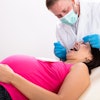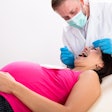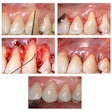How often Australian adults visit the dentist has a major impact on their oral health, according to a new report released by the Australian Institute of Health and Welfare (AIHW).
The report, "Dental attendance patterns and oral health status," uses findings from the 2004-2006 National Survey of Adult Oral Health to show that adults with an unfavorable pattern of dental attendance have significantly poorer oral health than those with a favorable attendance pattern.
The favorable group includes about 40% of Australian adults who have a usual dental care provider whom they visit at least once a year for a checkup. The unfavorable group, which includes nearly 30% of Australian adults, visit varying dentists infrequently and usually for a dental problem. The remaining intermediate group (30%) had a mixed pattern of dental attendance.
"While the pattern of dental attendance that people displayed did not lead to variations in the lifetime experience of dental decay, the way that decay has been managed varied significantly," said John Spencer of the AIHW's Dental Statistics and Research Unit. "Those with an unfavorable pattern of dental attendance had more than three times the level of untreated decayed teeth and 1.6 times more teeth missing due to dental decay than those with a favorable pattern of attendance."
Those seeking regular dental checkups were more likely to have dental decay treated promptly, which led to less untreated decay, fewer extractions, and more teeth restored, Spencer added.
Periodontal disease was also more frequent among adults with an unfavorable pattern of visiting the dentist. Those with unfavorable attendance were 1.6 times more likely to have gingivitis and 1.5 times more likely to have periodontitis than those with favorable attendance, he said.
Adults with an unfavorable pattern of dental attendance were also more likely to report barriers to accessing dental care. In particular, they were three times more likely to report avoiding or delaying dental care due to the cost, having difficulty paying a $100 dental bill, and being very afraid or distressed when making a dental visit.
The number of adults with an unfavorable visiting pattern is sizable and widespread across the whole population. However, this pattern was more frequent among younger adults, men, the uninsured, and those from lower socioeconomic backgrounds and areas, the report found.



















